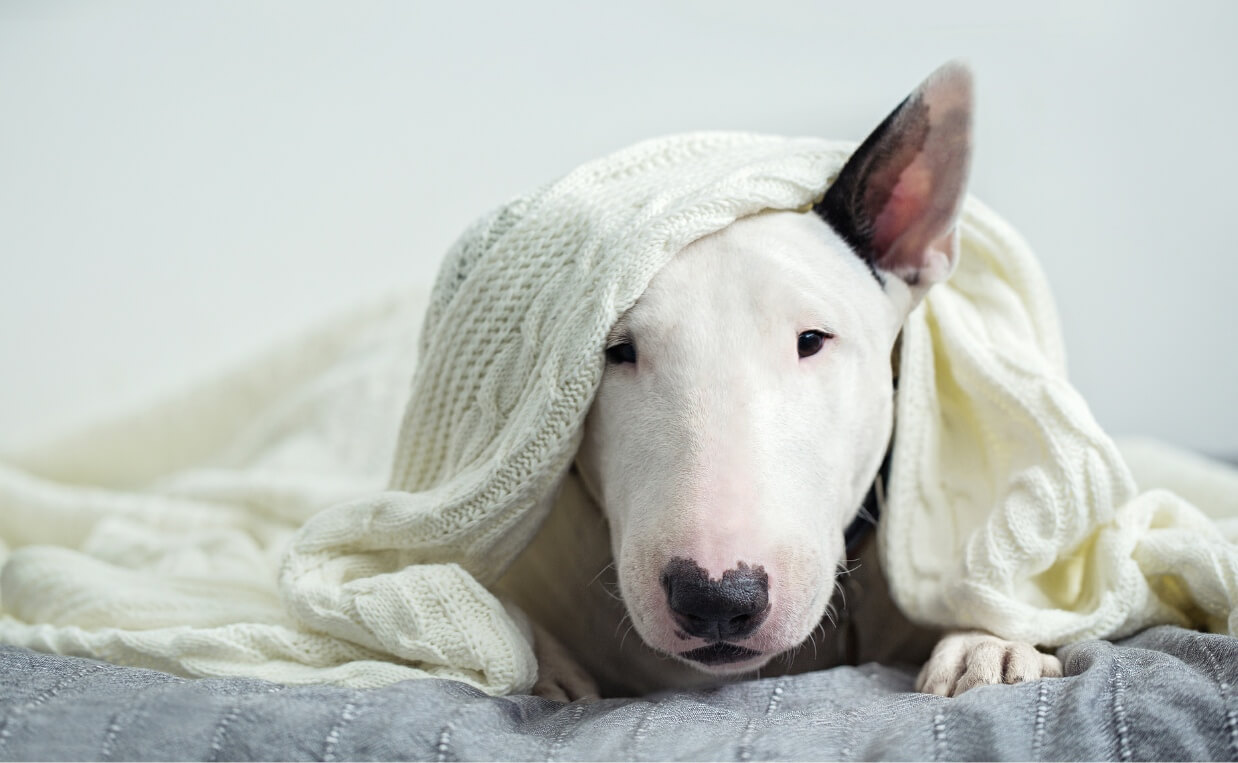
It’s thunderstorm season in Colorado and if you have a dog with storm anxiety, it can be a stressful time. Thunderstorms can be a magnificent display of nature’s power, but for many dogs, they can be a source of fear and anxiety.
Storm phobias can cause many different problem behaviors, such as:
- Ears back
- Trying to escape or hide
- Whining, howling or other types of vocalizing
- Destructive behaviors
- Trembling or shaking
- Restlessly pacing
- Pawing
- Salivating
- Self-injury
Thunderstorm phobia is very real and shouldn’t be ignored. It can be a serious problem for your dog and for you as well. As a dog parent, it’s important for you to understand what causes canine thunderstorm phobia and how to help your dog relax when thunderstorms occur.
In today’s blog post, we’ll delve into the reasons why dogs are often afraid of thunderstorms and what you can do to help them overcome their fears.
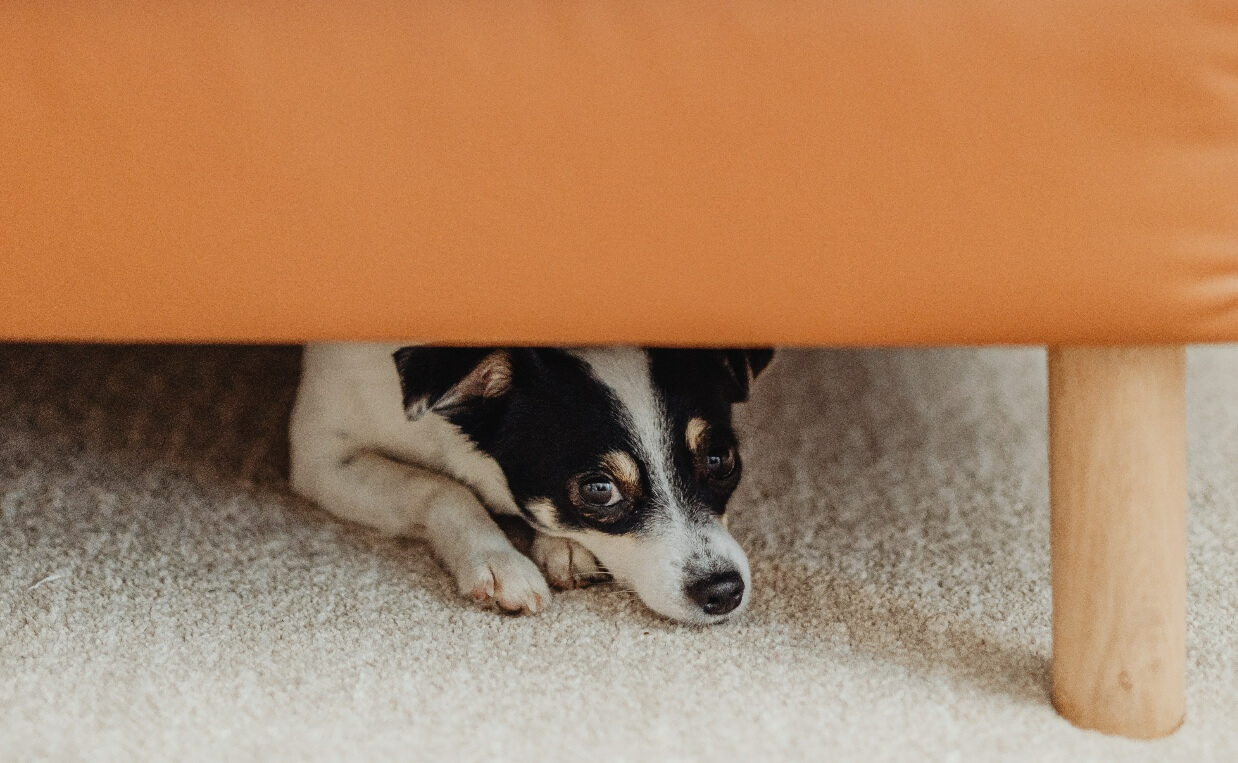
Why Dogs Are Afraid of Thunderstorms
-
Sensitivity to noise
Dogs have a keen sense of hearing, far superior to humans. The loud claps of thunder during electrical storms can be incredibly overwhelming for sensitive ears. Dogs can hear frequencies of sound well beyond the range of humans, so what may sound like a distant rumble to us can be a booming and terrifying noise to them. The suddenness and predictability of thunder can trigger a fear response, leading to anxiety and stress.
-
Vibrations and barometric pressure
In addition to noise, dogs can also sense the vibrations caused by thunder. The low-frequency vibrations can travel through the ground, intensifying their perception of the storm. Furthermore, changes in barometric pressure associated with thunderstorms can affect dogs. Just as some humans experience discomfort in their ears during changes in altitude, dogs may feel a similar sensation during a storm. These physical sensations can contribute to their fear and anxiety.
-
Electromagnetic activity
Thunderstorms literally charge the air with electricity, making it easier for static buildup to occur in the coat of your furry friend. It’s even easier for static to build up in larger dogs and those with double or long coats.
If your dog has static buildup in his or her coat, he or she might get a mildly uncomfortable shock to their sensitive nose if they touch it against metal. Research conducted by the Center for Canine Behavior Studies shows this could lead to a full-on phobia.
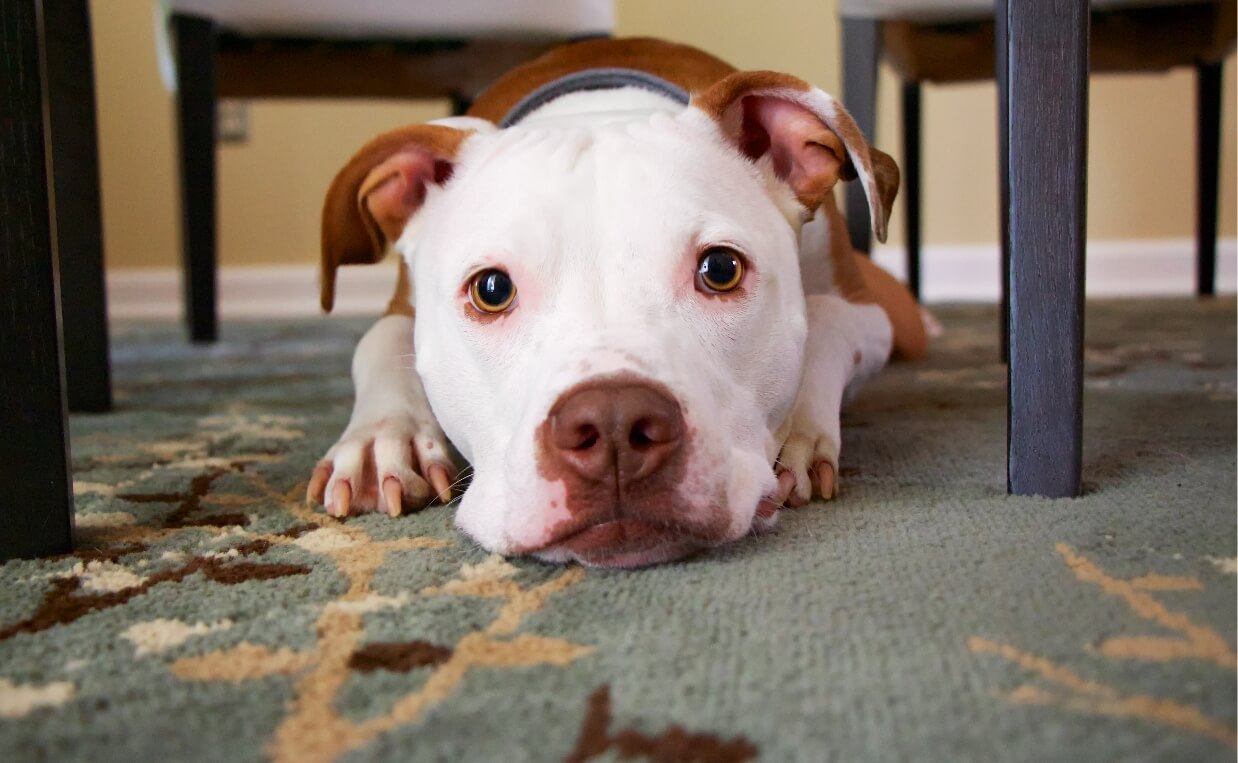
-
Association with negative experiences
Dogs are creatures of habit, and they quickly learn to associate certain events or situations with specific outcomes. If a dog has had a negative experience during a thunderstorm, such as being startled by a loud clap of thunder or being caught outside in heavy rain, it may develop a fear response to future storms. This association can be strong and long-lasting, causing them to exhibit fear and anxiety whenever a storm approaches.
-
Lack of control and predictability
Dogs are creatures that thrive on routine and predictability. Thunderstorms, however, are inherently unpredictable and beyond their control. The sudden bursts of thunder, flashes of lightning, and pouring rain can disrupt their sense of security and stability. Dogs may feel vulnerable and seek shelter or attempt to escape the perceived danger, leading to anxious behaviors.
-
Genetic predisposition
Some breeds of dogs may have a genetic predisposition to being more fearful or anxious in general, including during thunderstorms. For example, herding breeds such as border collies or German shepherds are known to be more sensitive to environmental stimuli. This genetic influence, combined with other factors, can contribute to a dog’s fear of thunderstorms.
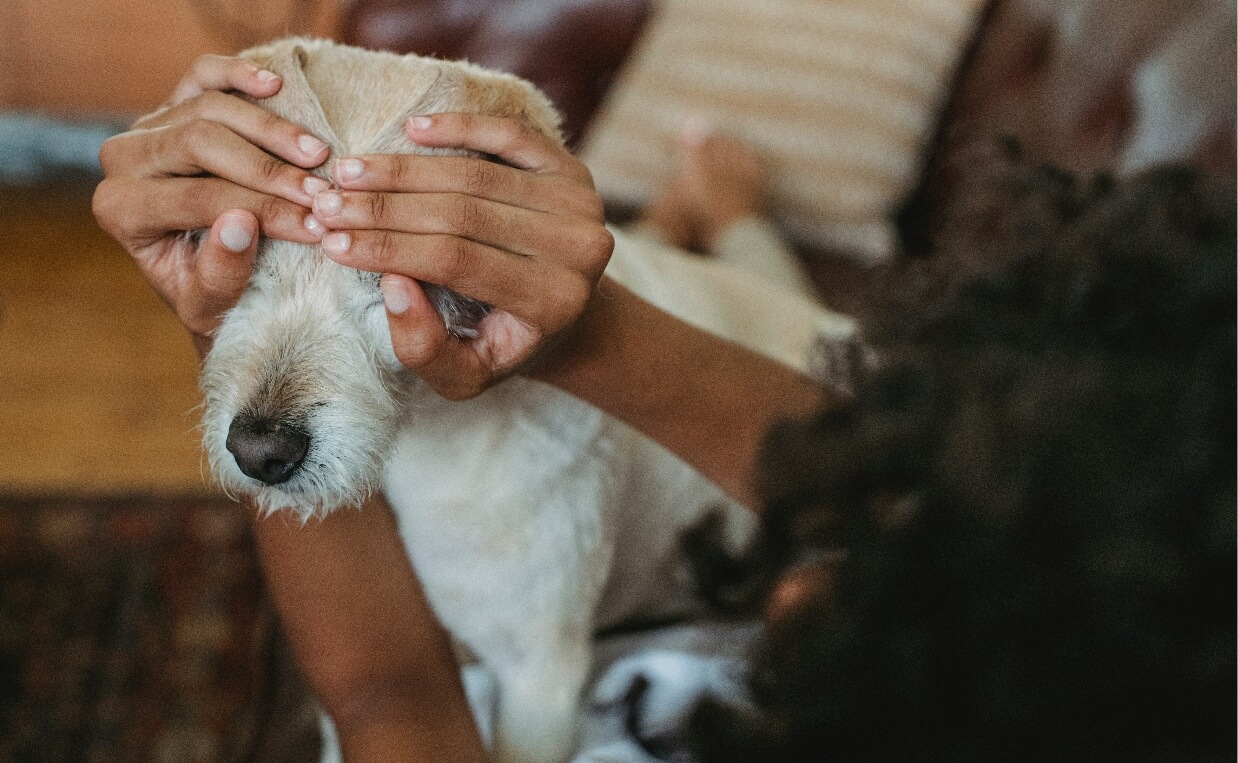
Helping Your Dog Overcome Thunderstorm Anxiety
Understanding why dogs are afraid of thunderstorms is the first step toward helping them overcome their anxiety. Even before a storm arrives, you may notice the first signs of storm anxiety. Your dog might start trembling or shaking, and as soon as the first rumbles of thunder begin, he or she might start pacing back and forth or looking for a place to hide.
As your dog’s anxiety increases, he or she might start panting and become increasingly panicked. It’s truly heartbreaking to watch, and it’s hard to know what to do. Here are some strategies you can try to help calm your dog down.
-
Create a Safe Space
One of the most effective ways to help calm your dog during a thunderstorm is by creating a safe space where he or she can seek refuge. Identify an area in your home that is relatively soundproof and secure. Ideally, this space should be a small, windowless room, such as a bathroom or basement, where external noises are minimized. Some dogs feel safest in their crate, especially if it is covered with blankets to create a den-like space.
-
Provide Soothing Sounds
Playing soft, calming music or white noise can help drown out the loud sounds of thunder and lightning. The constant, soothing sounds can provide a sense of security to your dog and distract them from the storm. Consider using a sound machine or playing classical music, which has been shown to have a relaxing effect on dogs.
-
Use Calming Products
There are various calming products available in the market that can help alleviate anxiety in dogs during thunderstorms. These products include anxiety wraps (also called Thundershirts), which apply gentle pressure to your dog’s body, mimicking the feeling of being hugged. Additionally, pheromone diffusers, such as Adaptil, emit synthetic pheromones that create a calming effect. Consult with your veterinarian to determine the best calming product for your dog’s specific needs.
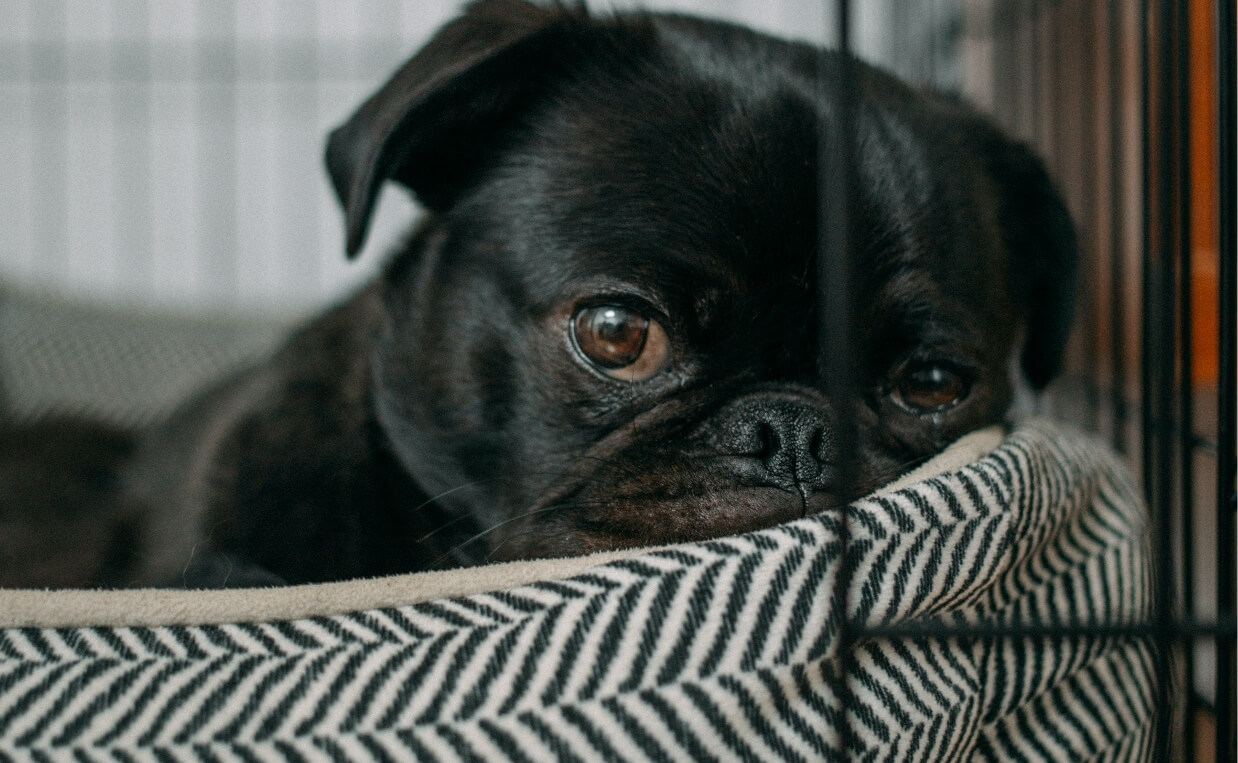
-
Establish a Routine
Establishing a consistent routine during thunderstorms can provide your dog with a sense of predictability and stability. Dogs thrive on routine, and knowing what to expect can help reduce their anxiety levels. Stick to a regular feeding and exercise schedule and try to engage your dog in activities they enjoy to distract them from the storm outside.
-
Offer Comfort and Reassurance
During a thunderstorm, your dog may seek comfort and reassurance from you. Provide them with a safe haven by staying close and offering physical contact, such as gentle petting or cuddling. Your presence can provide a calming effect and help them feel secure.
-
Create a Positive Association
Help your dog associate thunderstorms with positive experiences by engaging in activities they love during stormy weather. For example, offer them a special treat or engage in a fun training session using positive reinforcement. By creating positive associations, you can gradually reduce their fear and anxiety over time.
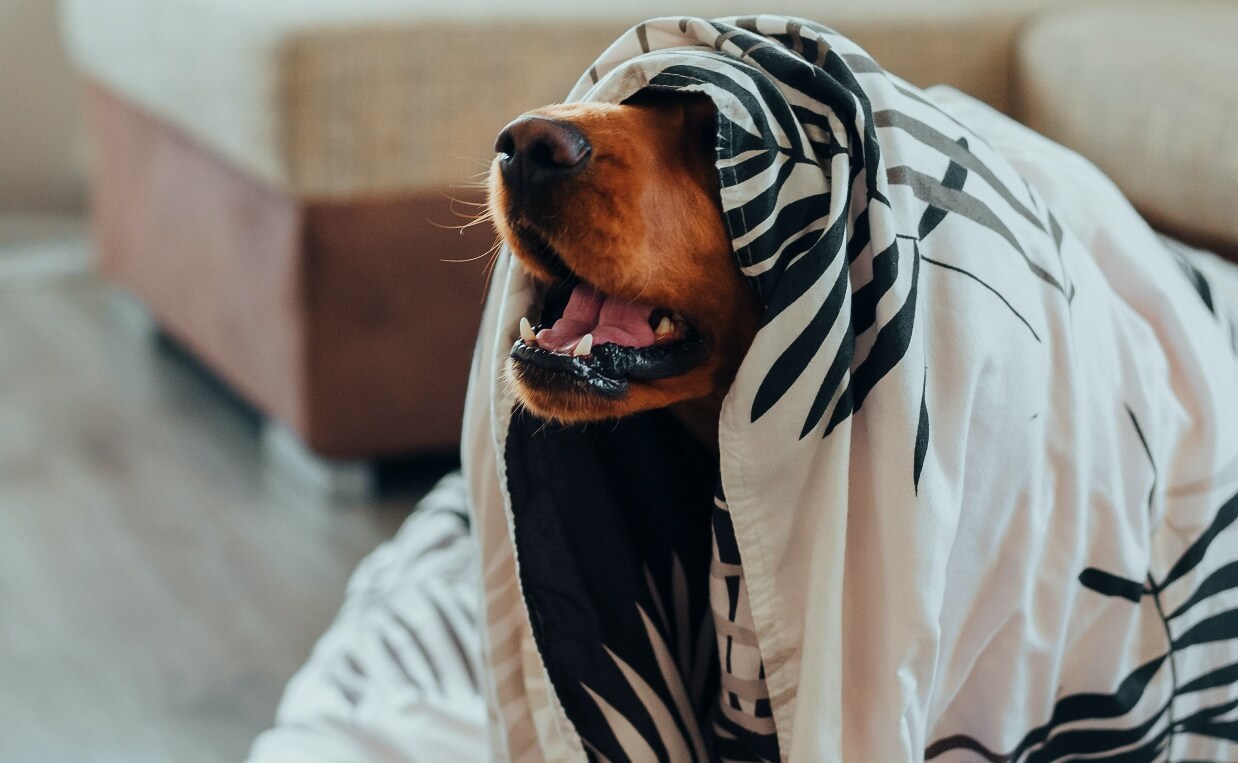
-
Consult with a Professional
If your dog’s anxiety during thunderstorms is severe or persistent, it may be beneficial to seek the guidance of a professional dog trainer or a veterinary behaviorist. They can assess your dog’s specific needs and provide tailored strategies to help manage their anxiety effectively.
Remember, each dog is unique, and what works for one may not work for another. Be patient and understanding and try different techniques to find the ones that work best for your furry friend.

Does your dog have thunderstorm anxiety? What strategies have worked for him or her? Please share your experience in the comments below…

 10 Tips to Make Moving with Dogs Easier
10 Tips to Make Moving with Dogs Easier 10 Tips to Help Your Dog Be a Good Neighbor
10 Tips to Help Your Dog Be a Good Neighbor Can Dogs Have Panic Attacks?
Can Dogs Have Panic Attacks? Understanding the Meaning Behind Different Sounds Your Dog Makes
Understanding the Meaning Behind Different Sounds Your Dog Makes Why Does My Dog Follow Me Everywhere?
Why Does My Dog Follow Me Everywhere?






My Dog a 2yr. Old mix Frenchie/Boston terrier was rescued from a Puppy mill one year ago. We have made great progress with him, but he remains people and Dog aggressive. He has bitten my son twice because he thought he was going to hit me. No sudden arm movements or any for that matter. We have him on Trazadone, 100mgs. But I don’t like the full amount he just gets weird and lays around with glazed eyes. So we give him a quarter or half problem is that amount does not do much. It takes forever to have any effect on him. His triggers are many, seeing other dogs anyone in our house except me and my husband and are other dog, purebred Boston Terrier. We love him so much but I’m at my wits end any help would be appreciated.
Hi Diane, thanks for stopping by the Canine Campus blog! Have you considered working with a certified dog behaviorist or trainer? Sometimes having an objective, trained professional provide guidance and support can really be helpful. If you need a low-cost option, consider a telehealth solution like Pawp. These types of programs provide help with veterinary as well as behavior-related concerns. Thank you for being willing to work with your dog’s special needs and protective behaviors. Be sure to loop back and let us know how your dog is doing in a couple of months!